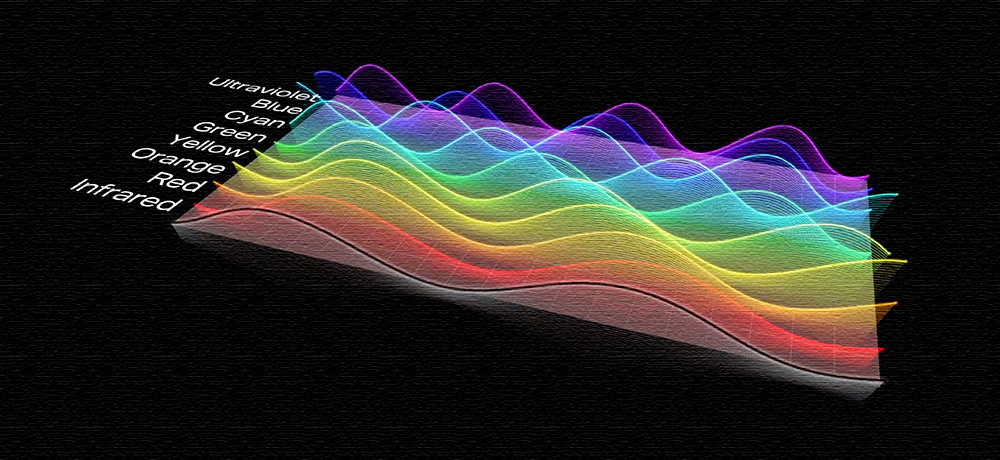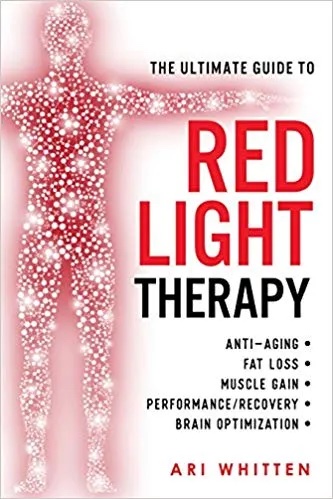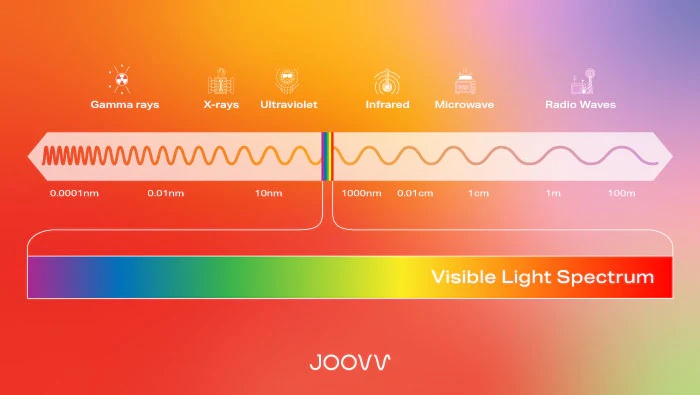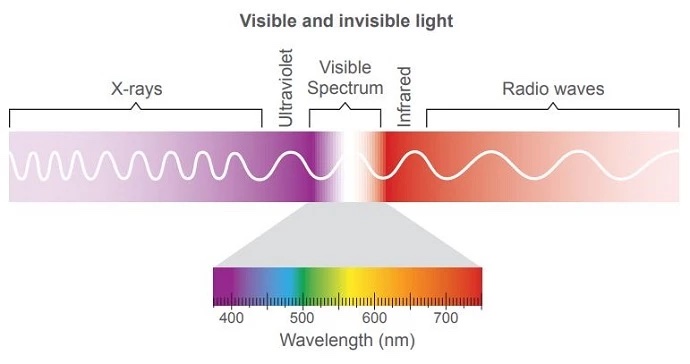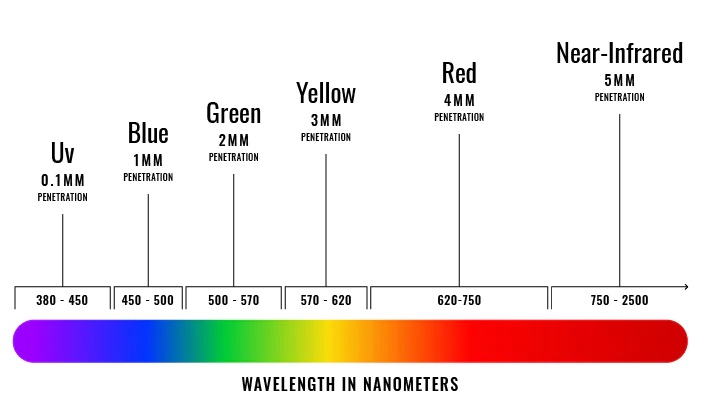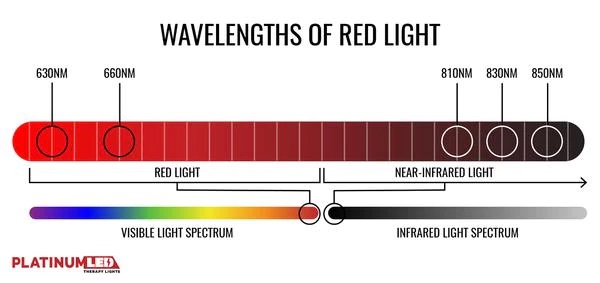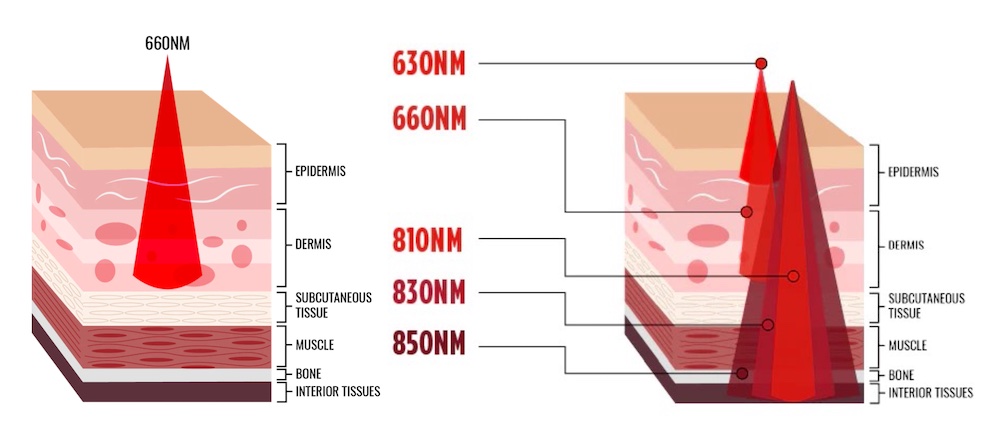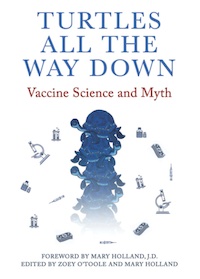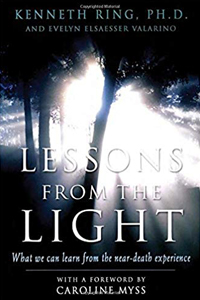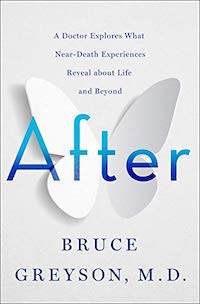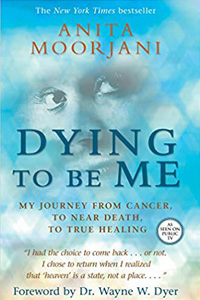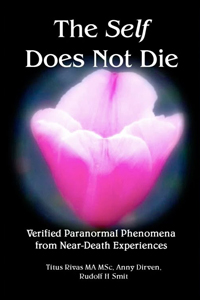……………..
Near-Infrared Light Resource Page
……………..
See Also:
Sunfellow Health & Healing Resource Page
……………..
• The Century Of Evidence Putting Light Inside The Body Is A Miraculous Therapy (A Midwestern Doctor, 06/23/2024)
……………..
How Does Red Light Therapy Work? (Infomercial From Joovv)
……………..
Simple & Inexpensive Near-Infrared Lights
• Infrared RubyLux Near-Infrared Bulb (850nm, 250watt, 1431 mW/cm2 at 6” – low-EMF, UV-free, no FAR infrared, no Teflon, no fluorinated fumes, no mercury vapor, no toxic substances)
• TheraBulb NIR-A Near Infrared Bulb (700-1200nm, 250watt, low-EMF, free of lead, mercury, cadmium, hexavalent chromium, polybrominated biphenyls, polybrominated diphenyl ether and other toxic substances)
• Red Infrared Light LED Therapy Lamp (72pcs 660nm deep red LEDs and 72pcs 850nm near infrared LEDs)
• Beurer IL50 Infrared Heat Lamp (500-2500nm, 300 watt – UV-free, built-in timer, overheat protection)
More Expensive, Medical-Grade Near-Infrared Lights
• Joov Lights & Light Kits
• PlatinumLED Biomax Near-Infrared Lights
• MitoREDLight
• Red Therapy Co
Fast, Versatile & Inexpensive Near-Infrared Light Setup
• Infrared RubyLux Near-Infrared Bulb (850nm, 250watt, 1431 mW/cm2 at 6” – low-EMF, UV-free, no FAR infrared, no Teflon, no fluorinated fumes, no mercury vapor, no toxic substances)
• Adjustable Light Stands
• Lamp Dimmer
• Safety Eye Glasses
……………..
Red & Near-Infrared Light Therapy Discussion Between Ari Whitten & Dr. Mercola
……………..
Amazon Description:
If there were a pill that was scientifically proven to help you look 10 years younger, lose fat, improve hormonal health, fight pain and inflammation, increase strength/endurance, heal faster, improve your brain health and increase your energy levels, it would be a billion-dollar blockbuster drug. Hundreds of millions of people would be told to start taking it by their doctors every day. And doctors all over the world would call it a “miracle drug.” Here’s the crazy part: That “drug” exists. But it’s not a pill. It’s red light therapy! Did you know that light has the power to heal your body and optimize your health? Of course, everyone knows about the importance of vitamin D from sunlight (from UV light). But few are aware that there is another type of light that may be just as vital to our health — red and near-infrared light. Think it’s all just hype? Think again! Believe it or not, there are now over 3,000 peer-reviewed scientific studies showing incredible health and anti-aging benefits of red and near-infrared light therapy. But it gets even better… While you used to have to spend $100 or more to get treatments done in a medical or anti-aging clinic (where this technology has been used for decades), new breakthroughs have allowed us to harness these benefits in the comfort of our own home, without the need to spend thousands on an expensive laser device or $100 per treatment at a health/anti-aging clinic. We can now do red light therapy at home, as much as we want, at a tiny fraction of the cost. In this book, Ari Whitten — bestselling author, health expert and founder of The Energy Blueprint — cuts through all the confusion, myths and pseudoscience around this complex topic, and takes you on a deep dive into the science of how to use red/near-infrared light therapy to improve your health, your body and your life in dozens of ways. Inside this book, you’ll learn how to use red/near-infrared light therapy to:
• Fight skin aging, wrinkles, and cellulite and look 10 years younger
• Lose fat (nearly twice as with diet and exercise alone)
• Rid your body of chronic inflammation • Fight the oxidative damage that drives aging
• Increase strength, endurance, and muscle mass
• Decrease pain
• Combat hair loss
• Build resilience to stress at the cellular level
• Speed up wound/injury healing
• Combat some autoimmune conditions and improve hormonal health
• Optimize your brain function and mood
• Overcome fatigue and improve energy levels You’ll also get critical information to get the best results, including:
• Specific dosing guidelines for every type of treatment (and how to avoid common mistakes)
• The 5 “bioactive” types of light that affect human cell function and human health
• Which health issues respond best to red/near-infrared light therapy
• The big mistakes people make when giving themselves red light treatments (and exactly how to do treatments to get the best results)
• The best light devices to get (and why most devices on the market are a waste of money)
• Exact protocols for how to use red/near-infrared light therapy for everything from fat loss, to brain optimization, to skin anti-aging Optimal light exposure habits are as essential to good health as good nutrition habits.
But the big problem is that, just as many people eat diets of processed junk food and fast food, most people are eating “light diets” of “junk light” and end up with chronic “mal-illumination.” This book will show you how to fix that. Red and near-infrared light therapy is one of the biggest health breakthroughs in the last half century. If you’re serious about your health and improving your body, it’s time to start using this powerful tool in your life. Buy this book NOW to become the healthier, happier, leaner, stronger, youthful person you’ve always known you could be.
……………..
What Is Light?
(The sun, the light spectrum, colors of light, red and near infrared (NIR) light, and the possibilities of light therapy)
Light is essential for all life on earth. It’s fundamental to human health, and light is a key component of a balanced lifestyle, just like diet, exercise, and sleep. But light is often overlooked as a major contributor to health and well-being. And most people don’t get nearly enough sunlight: the average American spends over 90% of their time indoors, surrounded by bright artificial light.
This article explains the basics of light: the sun, the light spectrum, colors of light, red and near infrared (NIR) light, and the possibilities of light therapy.
What Is Light?
Light is electromagnetic radiation, in the form of a wave. You can think of light as energy that travels through the air with a specific frequency, or wavelength. The shorter the wavelength, the more energy the wave contains; the longer the wavelength, the deeper the wave can penetrate into human tissue. Wavelengths of light are measured in nanometers (nm). A nanometer is one billionth of a meter, or 0.000000001 meter.
The electromagnetic spectrum includes numerous wavelengths of light with different frequencies and colors.
As you can see on our wavelength chart, the spectrum includes both visible light that humans can see, like red and blue light, and also invisible light like near infrared (NIR) light. Visible color in light comes from the length of the wave and how our eyes perceive it. The energy in light is dependent on the wavelength and color is how the human eye and brain understand of light’s electromagnetic wavelengths. The visible spectrum of light makes up a very small portion of all electromagnetic radiation.
Different Colors Of Light Have Different Health Effects
Ultraviolet (UV Light): Ultraviolet light (100nm-400nm) is invisible and has short, powerful wavelengths. UV light from the sun is what’s responsible for tanning or burning your skin. UV light is also responsible for supplying the body with Vitamin D. Scientists have confirmed that UV light helps humans produce and maintain vitamin D3 levels, which allow the body to effectively absorb calcium from food with our intestines.
Blue Light: One of the most commonly isolated wavelengths of light is in the 380-500nm range, which our eyes perceive as very bright blue light. Blue light is isolated and used in most of our modern screen technology, from TVs to phones to tablets to computers. Blue light is very good at illumination, and an efficient source of light for electronics. It’s also been found to have some positive effects for bacterial acne and teeth whitening.
However, it also has downsides and negative effects for human health. Because blue light is so bright, with a higher color temperature than daytime sun, it makes your brain and body think it’s time to be wide awake. So if you take in too much blue light at night, you can knock your circadian rhythm out of balance and develop sleep problems, beyond potential risks to your eyes. If you want to learn more about blue light and how red light can help counteract the negative effects of blue light, check out this article.
Green Light: Green light, in the 520-560nm range, is less well understood than blue and UV light. Researchers are still studying the effects of green light, with some initial trials showing potential anti-inflammatory effects in laboratory animals. More research is needed to examine the specific effects of green light on human cells and tissues.
Yellow Light: Like green light, yellow light is still being researched and explored by scientists. Yellow light is in the 570-590nm range, and early studies have pointed to potential benefits related to skin health, but more studies are needed to draw conclusions.
Red Light: Red light comes from wavelengths in the mid-600nm range. Red light is visible and has been studied in thousands of clinical trials and medical studies. The health benefits of red light are well-established. In the early 1990s, NASA found that red light could activate plant growth in space, in the absence of sunlight. This and other earlier discoveries led to far greater clinical interest in red light therapy. You can read more about the history of light and red light therapy here.
Red light has been shown in numerous studies to enhance cellular function, by stimulating the mitochondria in our cells to produce more ATP cellular energy, which powers everything humans do. Research has also found numerous skin health, inflammation, and recovery benefits.
Near Infrared (NIR) Light: Near infrared light (in the mid-700 to 1000s nm range) has a much longer wavelength than the previous colors we’ve mentioned. That allows wavelengths of NIR light to penetrate deeper into the body, for further-reaching deep tissue healing and regenerative effects. NIR light can support muscle health and enhance the body’s natural recovery and healing processes.
Mid and Far Infrared Light: Mid and far infrared light are commonly used in saunas, to heat up the body and promote sweating. You can read about how red light therapy differs from saunas here.
Red And Near Infrared (NIR) Light Enhance Cellular Function And Health
The existing body of research on light and human health shows that red and NIR light are the most beneficial wavelengths, with the fewest risks and downsides. UV light is crucial for vitamin D, but it can also be dangerous when you absorb too much. Blue light similarly has upsides and serious downsides. Red and NIR light have shown a wide range of potential health enhancements, with relatively little risk and few side effects.
Thanks to today’s LED technology, Joovv is able to isolate specific wavelengths of red and NIR light and deliver it directly to the skin and cells. Red light therapy is essentially taking the most beneficial wavelengths of light we get from the sun, and avoiding everything else, so you can target the mitochondria and enhance cellular function and energy production across the body. In conjunction with a healthy lifestyle, absorbing red and NIR light supports biological balance and overall health.
Light Is Key For Balance And Good Health
Light is key to all life on earth, and it’s essential for human health and function. Most people don’t get nearly enough light from their environments, which can have negative health consequences. Red and NIR light in particular has been shown to enhance cellular function, and support healthier sleep, skin, and recovery.
……………..
The Difference Between Light Therapy And Near Infrared Therapy
Light Science
Many ancient cultures, such as Greece, Egyptians, Romans, and Incans, have discovered the health benefits of sunlight and use various forms of sun exposure to treat diseases. In the 19th century, Niels Finsen observed that the sun helped with his symptoms of Niemann-Pick disease and that animals sought sun exposure, so he started studying the healing effects of lights scientifically. In 1903, he was awarded the Nobel Prize in Medicine for his discovery of phototherapy.
What Is Light Therapy?
Light therapy (phototherapy) refers to the use of light at specific frequencies and intensities in order to affect our physiology. In most cases, the effects of light therapy are not mediated through eyesight, but rather by the lights directly affecting the target cells.
Phototherapy has been clinically studied for over 100 years. Currently, many light spectrums are now prescribed as medical treatments. Example of light therapies include:
• UV light exposure to increase vitamin D levels and manage autoimmune or allergic skin conditions, such as psoriasis, vitiligo and eczema
• White, blue, or blue-green light exposure to manage jaundice in newborns
• Bright blue or white light therapy to manage seasonal affective disorders, circadian rhythm disorders, and jet lag
• Red light and near-infrared wavelengths to energize the mitochondria through photobiomodulation, which can have anti-aging, wound healing, and anti-inflammatory effects
On the other hand, the sight of colors has been related to health benefits, especially in traditional medicine such as chakra and Ayurveda. More recently, several scientists scientifically examined how colors affected us and the possible uses of color therapy (chromotherapy).
It is important to understand that phototherapy is different from chromotherapy. In this article, we will cover the definitions, the scientific evidence, and the different uses of each.
What Is Infrared Light Therapy?
Infrared light therapy is a form of light therapy, which involves getting exposed to sufficient intensity of infrared light to experience health benefits. The infrared spectrum is the invisible light with frequencies below that of the red light. It is why we feel gentle radiant heat when we are exposed to the sun because infrared creates heat in our tissues. However, the infrared spectrum also affects our physiology in other ways.
The infrared spectrum is between 700 nm to 0.1 mm in wavelength, which can be divided into near, mid, and far infrared spectrum. The longer the wavelength, the lower the frequency and the further the light can penetrate tissues.
Different Ranges Of Infrared Frequency Have Different Health Benefits
• Near infrared light, with wavelengths between 700 – 1400 nm, generates the most heat but does not penetrate deep into human tissues. In addition, the 760 – 895 nm range of infrared light can stimulate the mitochondria function, which can increase metabolism, improve tissue repair, and reduce inflammation.
• Mid infrared light, with wavelengths between 1400 – 3000 nm. It penetrates deeper than near infrared light and generates more heat than far infrared light. Mid infrared light can help expand blood vessels and increase circulation so that blood can reach injured or inflamed areas of the body.
• Far infrared light, with wavelengths between 3000 nm – 0.1 mm. Far infrared penetrates deepest into the tissues. Its health benefits come from both generating heat and other properties. Far infrared light can potently reduce inflammation and oxidative stress. It increases circulation, improves blood vessel and heart functions, reduces pain and fatigue, and normalizes blood pressure.
Heat exposure has several health benefits that are similar to exercise. For example, both exercise and heat work out the cardiovascular system, which improves the health of your heart and blood vessels, and also increases the euphoric hormone endorphin. The heat also improves your immune function, sleep quality, and detoxification through sweating.
Although many clinical studies have shown that both mid and far infrared have many health benefits in ways that do not involve heat, scientists are still working to understand exactly how these infrared spectrums exert their benefits. For example, both mid and far infrared spectrums are well absorbed by water. Therefore, these spectrums could help organize the water molecules inside the cells, which helps improve cellular function.
Red Light vs. Near Infrared Therapy
Red light therapy and near infrared light therapy fall into different light spectrums. The two are often confused as the same thing but they are really quite different. Red light falls into the visible part of the light spectrum between 630-700 nm on the electromagnetic scale and is used to treat the surface of the skin. Near infrared wavelengths fall into the invisible part of the light spectrum between 700 and 1200 nm. So, what does this mean? The longer the wavelength, the deeper the penetration to deliver energy to the cells, stimulating healing and relieving pain. Various cell and tissue types each have their own unique light absorption methods at varying wavelengths. This means certain tissues absorb certain kinds of light. For example, light vibrating at the blue wavelength is great for skin while other colors may penetrate the skin more deeply.
The optimal near infrared (NIR) technology is done by LED as you are able to control the surface temperature. Also, LED disperses over a larger surface area than a red-light halogen or laser. Another major difference between LED and halogen and laser is the way light energy is delivered (optical power output – OPD). The OPD of LED NIR is measured in milliwatts and laser and halogen are measured in watts. This allows LED to have a gentler delivery as it will not damage tissue and will not have the same risk of accidental eye injury. Also, with LED, NIR disperses over a greater surface area allowing for a faster treatment time.
NASA research has found that the NIR electromagnetic frequency band of energy penetrates deeply into the body and can have a healing effect on our individual cells. For example, inside the mitochondria of every cell are receptors which respond to near infrared wavelengths. The light triggers an increase in cell metabolism, protein synthesis (including collagen), and antioxidant activity (meaning the cells detoxify). Additionally, it reduces inflammation and pain while simultaneously triggering growth and regeneration in the cells.
What Is Chromotherapy?
Chromotherapy, also known as color therapy, refers to the use of color perception through eyesight to affect the state of mind and physiology. Many principles behind chromotherapy are based on ancient healing philosophies, such as the chakra and ayurvedic systems, although many scientific studies have examined the health effects of colors. In addition, other fields such as interior design, architecture, and marketing have long used colors to affect mood and behaviors.
Several studies have measured the physiological effects of color. A Spanish study published in PLoS One demonstrated that blue lighting improved relaxation responses after a brief period of stress. Measures of arousal, such as skin conductance response and heart rate, are higher when viewing red compared to blue or green. In addition, saturated and bright colors increased arousal.
A Turkish study demonstrated black plates may cause you to eat more than white plates, which may explain why many restaurant brands use red. A detention facility in California found that bubblegum pink rooms calmed down the aggressive children, so now many hospitals and correctional institutions in the US started to use the shade.
……………..
The Benefits Of Red Light Therapy
See Also:
• Red Light Therapy: Uses, Benefits, And Treatments
Some of the benefits include:
• Improved muscular healing and accelerated recovery
• Improved recovery from moderate to severe stroke
• Improved recovery/reduction of neurological damage from traumatic brain injury (TBI)
• Improvement of psychiatric disorders including anxiety and depression
• Reduced recovery and accelerated healing following plastic surgery
• Accelerated healing and reduced infection
• An increase of endorphins, which are the body’s natural pain-relieving chemicals
• Improved bone repair and growth
• Accelerated return to athletic activity after injury
• Relief from Osteoarthritis and Rheumatoid Arthritis Joint Pain
• General Pain Relief (Low Back Pain, Tennis Elbow, and Shoulder Pain
• Brain Health: Neurodegenerative Disorders, Stroke, TBI, and Mental Health
• Muscle Health: Accelerated Recovery from Exercise and Injury
• Accelerated Wound Healing and Scar Reduction
• Improved Skin Health
• Weight Loss
……………..
Dr. Ryan Cole: Treating Myocarditis With Infrared Light
“One of the patterns in myocarditis is up regulation of a certain receptor called toll-like receptor number 4. And that up regulation will induce certain inflammatory pathways to start causing inflammation of the heart. Well we know in vitro we can down regulate that receptor with something as simple as near-infrared light. And near-infrared light can penetrate up to about four inches through skin, through bone, into the deep tissues of our body. Now it helps regenerate mitochondria but it also down regulates this receptor which then hypothetically would also down regulate inflammation. So something as simple as taking x number of patients with myocarditis, taking a near-infrared light panel, putting it on the cardiac tissue, we know it works in vitro, completely, very well risk intervention, 16 – 20 minute exposure per day, and then check the inflammatory markers, do the followup scans. Simple studies like this; these out-of-the-box ideas when we have the plausible mechanisms already proven, we have the pilot information available . . . Some of the traditional things: the steroids, the Cultrazine, don’t move your body for six months — sure; but what about finding better things constantly? That’s what medicine should be doing, science should be doing, is asking questions and then evolving.”
— Dr. Ryan Cole
……………..
Additional Information:
• PlatinumLED Therapy Lights Learning Center
• How Often Should You Use Red Light Therapy?
• Red Light Therapy: The Best Way To Boost Your Immune System Today
• Red Light Therapy For Sleep: A Science-Backed Method For Going Lights-Out In No Time
• Red Light Therapy For Blood Clots
• Red Light Therapy For Inflammation
• Red Light Therapy For Pain
• Red Light Therapy: Remarkable Relief For Long-Term Back Pain
• Ease Arthritis Pain And Inflammation With Red Light Therapy
• Natural Remedies For Joint Pain (Arthritis, We’re Looking At You!)
• Red Light Therapy: Wound Healing At The Cellular Level
• Can Red Light Therapy Stimulate Your Mitochondria To Produce Cellular Energy?
• Brain Light Therapy: What Scientists Say About Red Light And Brain Health
• Red Light Therapy For Mental Acuity
• Does Red Light Therapy Help Treat Alzheimer’s Disease?
• Red Light Therapy Vs. Infrared Light Therapy: Which Is Better For Anti-Aging Treatment?
• Red Light Therapy For Wrinkles: Your Anti-Aging Secret Weapon
• Red Light Therapy For Hair Loss: The Last Treatment You May Ever Need
• Red Light Therapy For Testosterone
• Does Red Light Therapy Help Treat Alzheimer’s Disease?
• Yes, Red Light Therapy Works For Weight Loss: Here’s How And Why
• Red Light Therapy For Cellulite: Does It Really Work?
• Medical-Grade Red Light Therapy Devices: A Complete Guide
• 12 Best Devices For Red Light Therapy At Home (And How To Use Them)
• Comparing Red Light Therapy Devices: Platinumled Vs. Joovv Vs. Red Light Man Vs. Redrush Vs. Redjuvenator
• The History Of Red Light Therapy
• Ultraviolet Light Therapy Reduces Viral Load In Critically Ill Covid-19 Patients (Sanchari Sinha Dutta – 03/09/21)
……………..
Sunfellow Health & Healing Resource Page
……………..

